Camouflage by proxy
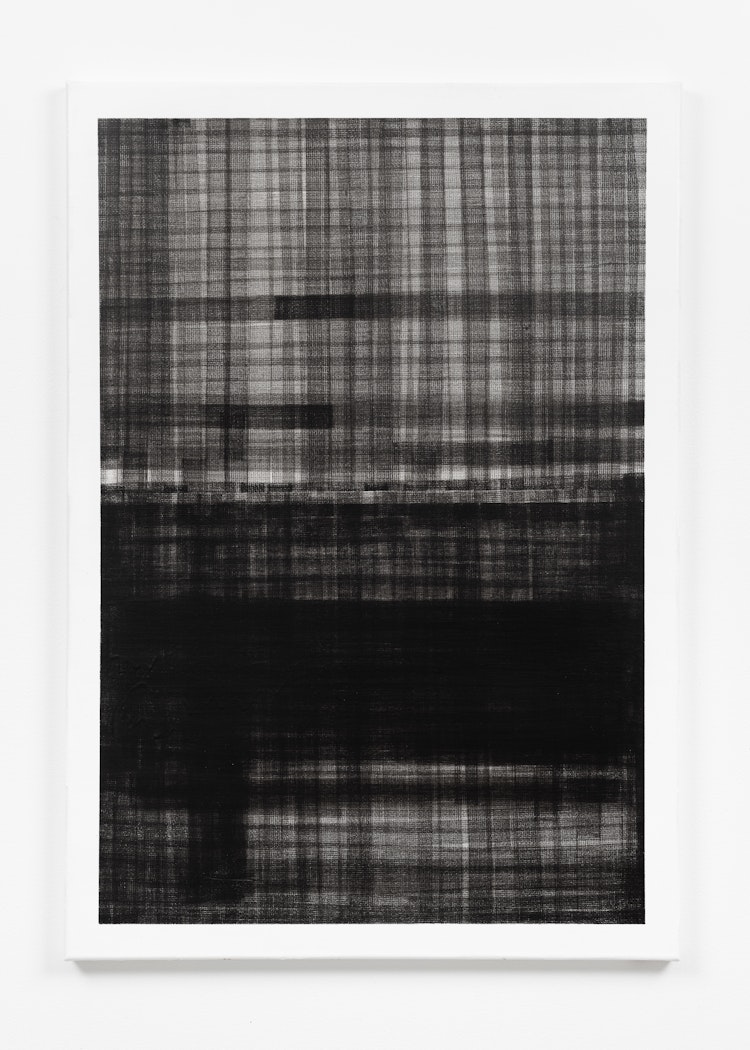

There I was stretching my legs on the couch in my studio, multitasking, thinking of a concept for a new series of paintings, while surfing on Amazon. And what did I find? A handy little office device: a Japanese ink scrambler used for censoring information in documents. Simply roll the stamp over any surface with text, and its chaotic configuration of letters will swiftly camouflage the underlying content. As I added the roller stamp to my Amazon shopping basket, the idea was already in motion: In my coming paintings, I wanted to question nothing less than painting itself, evoked by the simplest of all means – a blank primed canvas and my new roller stamp.
From the product description:
Identity theft is the fastest growing crime in Europe, the Guard Your ID roller help keep others from seeing your confidential information. Simply roll the Camouflage Stamp across utility bills, bank statements, junk mail etc., to obliterate your personal details and feel confident that it is safe from prying eyes.
Using the scrambler for a series of canvases, I would code my own “painterly” gestures as prescribed in the product description, as a way of “quickly stamping over your personal information” – in other words it was modernism in its purest form. It was evident that I, with the “Guard Your ID roller” in hand, could emulate compositions akin to Rothko, make a Malevich and a batch of Barnet Newman’s zips, with conceptual elegance. Why not a few Ad Reinhardt canvases, all rolled on to an even black surface? As the list of references grew longer, I elaborated further.
Surely these new paintings would raise numerous theoretical questions. Wouldn’t these works, when produced, negate the very idea of gesture in painting? When the stroke, the act of “painting” is reduced to its most basic concept, as an indecipherable text, neither to be considered abstract, or representational, the gesture becomes an intermediate proxy of chaotic letters. Lying on the sofa I had found my concept and I pictured myself in the studio looking at a new body of work: rolled over the canvases, black on white, a dark primordial soup of potential words, seeking its dialectical opposite – the gibberish of “International Art English”.
Best of all, I liked how it resonated with Duchamp’s notion of a tube of paint as a readymade. The Guard Your ID Camouflage Stamp was pure deconstruction, as the content – the canvas in itself – stroke by stroke, was to be camouflaged, making a mockery of its hidden secrets and art history itself.
For a price of 9 euros it was a bargain. At the studio, four days later, I opened my package from Amazon, with some primed canvases ready on the wall. When the test paintings were finished, I found myself in a state of theoretical vertigo. It looked fantastic. My Japanese scrambler had done magic. Best of all I loved how it displaced me as an artist. It was as if I never painted them. My gestures, layers of theoretical camouflage, seemed to hover, floating in an undefined space above the canvas, above the constraints of my own signature. I had managed to erase myself, transcend the lyricism of expression – I was invisible in these paintings – they talked a universal language of anonymity and non-expression. Until the moment I inspected them in detail.
The “PLUS JAPAN "Guard-Your-Id" Camouflage Roller Stamp” had by coincidence, in an almost incomprehensible chain of events, subverted the project. For me this is a riddle: for when I looked at my canvases to check the Japanese idea of pure gibberish, a completely undecipherable text, it was an endless repetition of my name: KVAM.

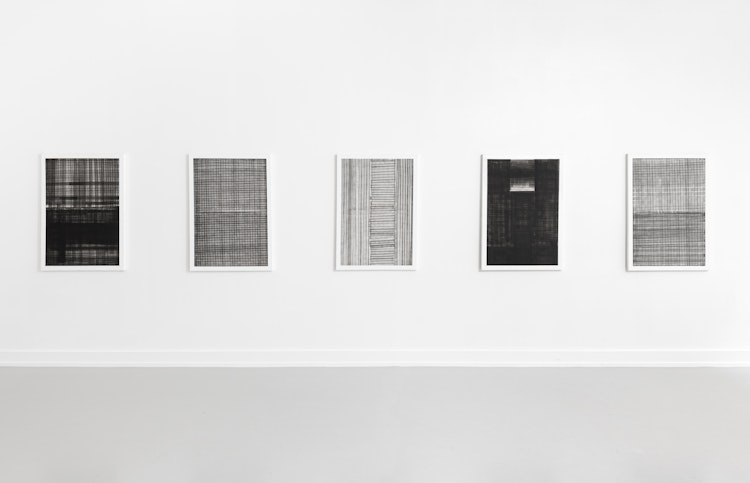

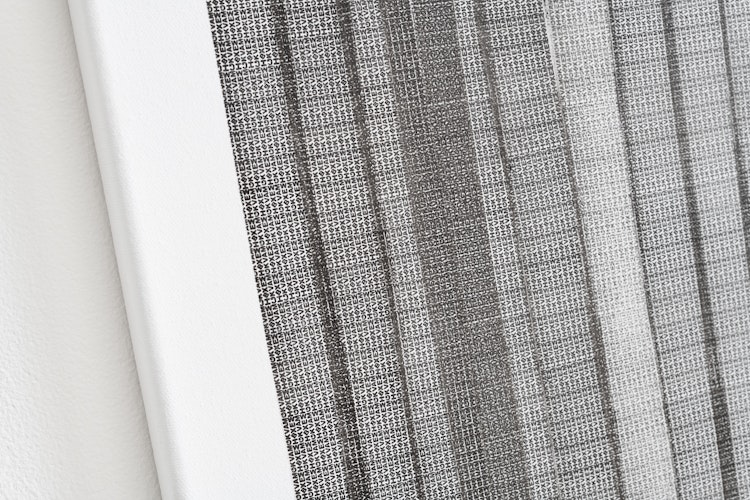




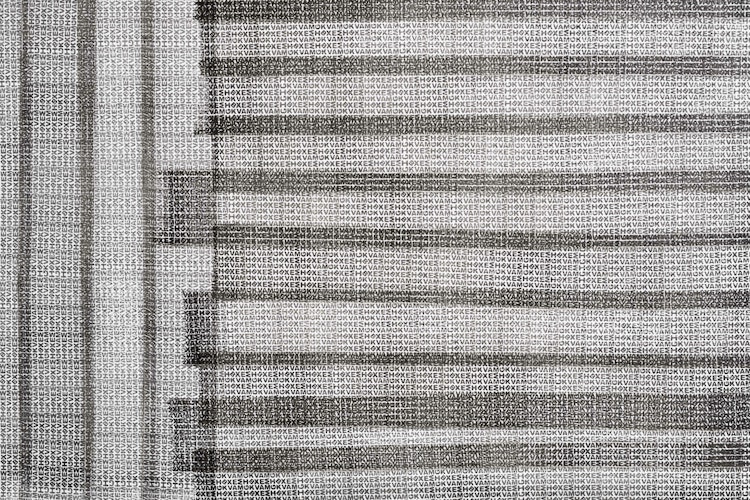


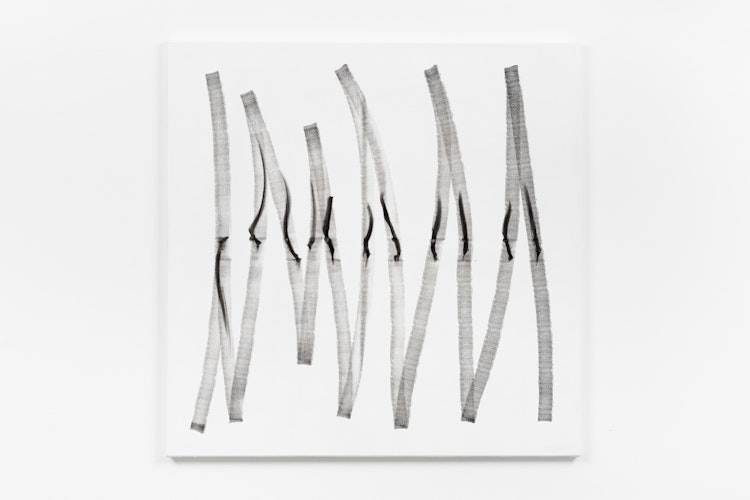

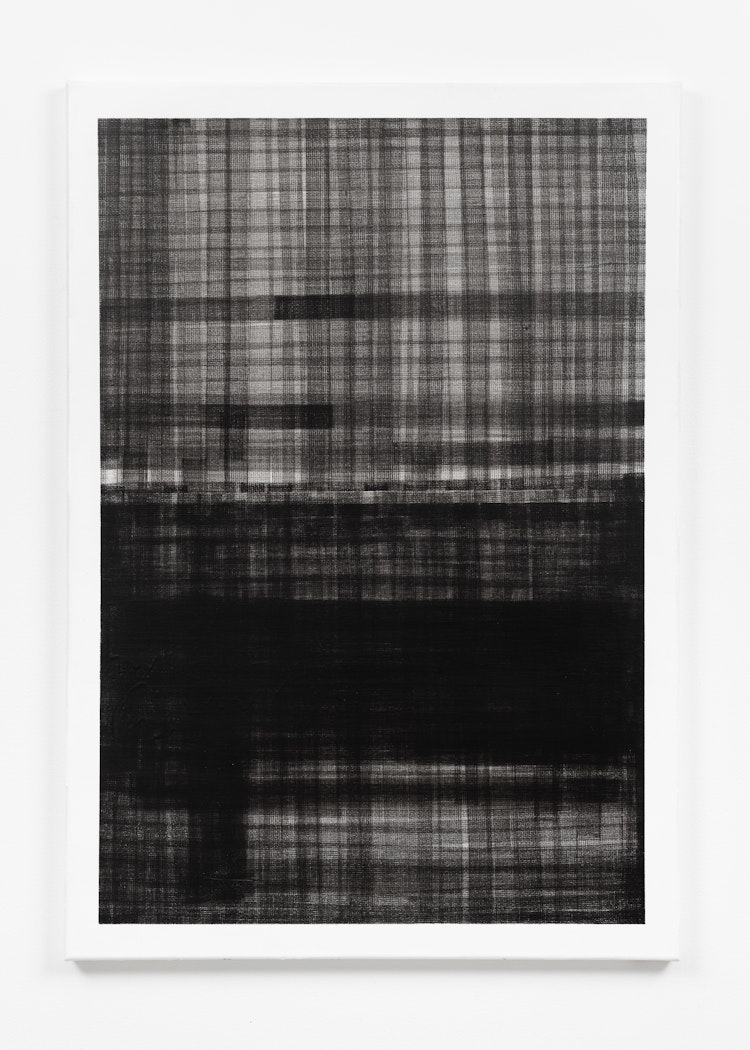
What are you looking for?